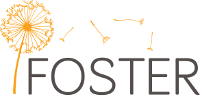Open Access is an alternative and complementary channel to traditional scholarly dissemination. It is based on the principle that the results of publicly funded research must be publicly available through an immediate and open access to research data and results.
Traditional academic publishing has always been based on the relationship between publishers and authors, who have been constantly required to transfer all or most of their rights to the publishing house to give visibility to their production. Indeed, most of the standard contracts ask to renounce copyright control, transferring all rights to the publishing house. This dissemination model has generated a distorted system, where academic and research institutions have to sustain enormous costs, paying more than once for the exploitation of the research results obtained by their authors.
The recent Plan S initiative, launched by the cOAlition S consortium, intervenes decisively on this issue, accelerating the transition process towards Open Access.
To practice Open Access consciously it is necessary to know the normative framework and to have more details about OA publishing models and resources and tools.
In Europe
The EU regulation establish that research products published with the support of EU financing should follow the indications provided in the Commission Recommendation (EU) 2018/790 of 25 April 2018, which substitutes those published on 12 July 2012. It is confirmed that the research products should be deposited in an online repository granting open and free access as soon as possible or within 6 months (STM) or 12 months (SSH) from the publication date at latest. An exception is made for research products whose purposes are bound to copyright, economic exploitation, and marketing (e.g. patents).
The last EU Recommendation support: the transparency in the publishing market, making special reference to transformative agreements undersigned by a consortium; the copyright retention by the authors;the need of changing the procedures for research assessment.
In Italy
The Italian law decrees that research products publicly funded outside EU actions should follow the indications provided by the Italian law on Open Access (n. 112, 7 October 2013), stating that research products must be freely available within 18 months from the first publication for the STM disciplinary areas and 24 months for the SSH ones.
The Proposal Law no. 395, if approved, will replace the law in force shortly.
Read here the Dossier n° 23/1 - Elements for the examination in the Assembly of 11 March 2019.
In order to better understand Open Access, it is important to:
Know OA advantages
- it grants wider dissemination to the research results;
- it favors sharing and transparency;
- it favors a more transparent peer-review;
- it favors the exploitation of alternative metrics in the research assessment exercises;
- it favors the use of techniques as text-mining and data-mining;
- an article ... the more it is visible ... the more it is read ... the more it is cited.
- it changes the economic model by reducing the costs of subscriptions;
- it favors economic and social growth.
Dispel some (false) myths
- it is not in contrast with peer-review;
- it applies to scientific literature when compensations are not provided to the authors, besides the recognition of the international community;
- it applies to public funded research data with the exception of sensitive data and patents;
- it is copyright compliant, as the author retains complete rights on his/her intellectual production;
- it is the preferred channel for the free dissemination of research results financed by public funding.









